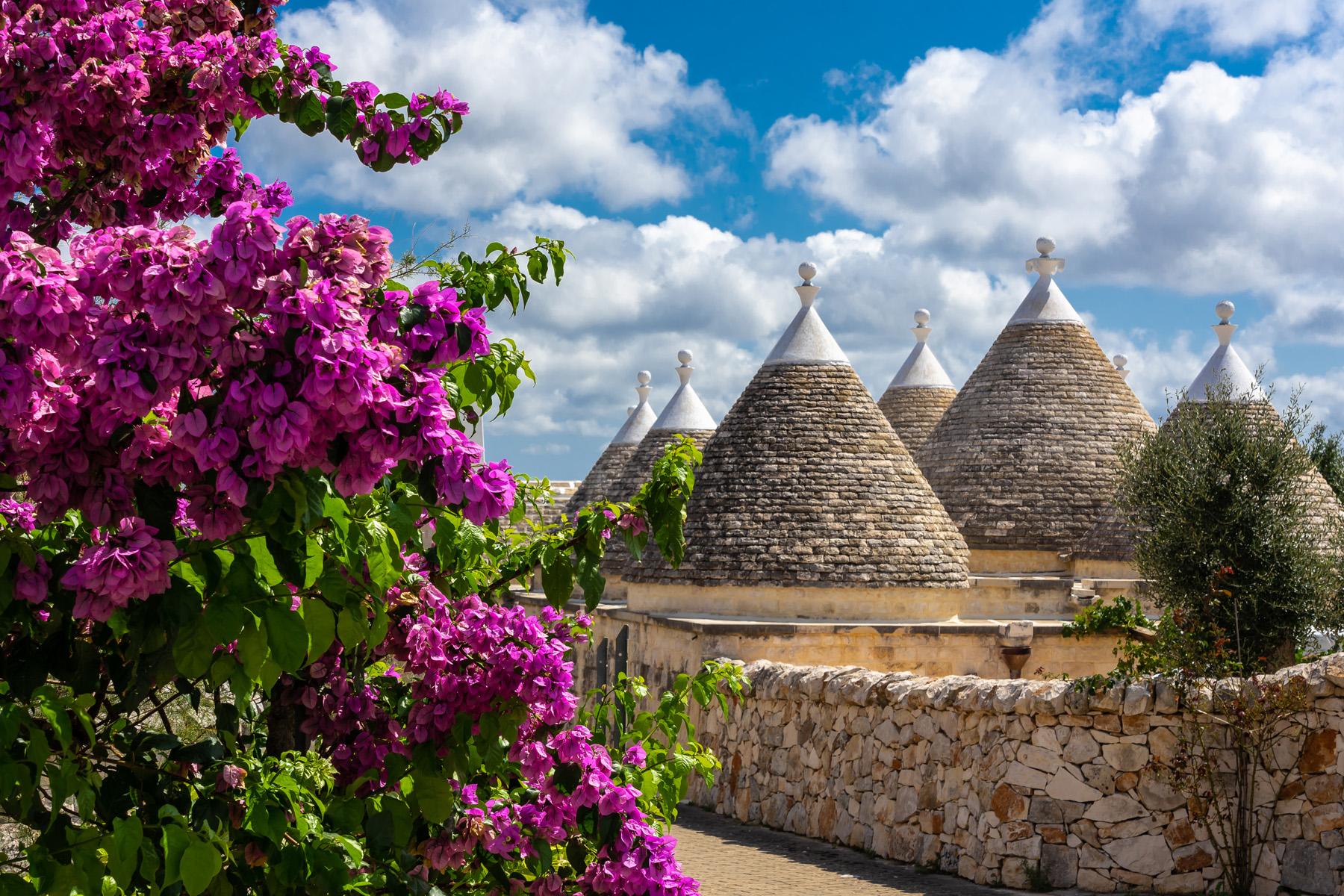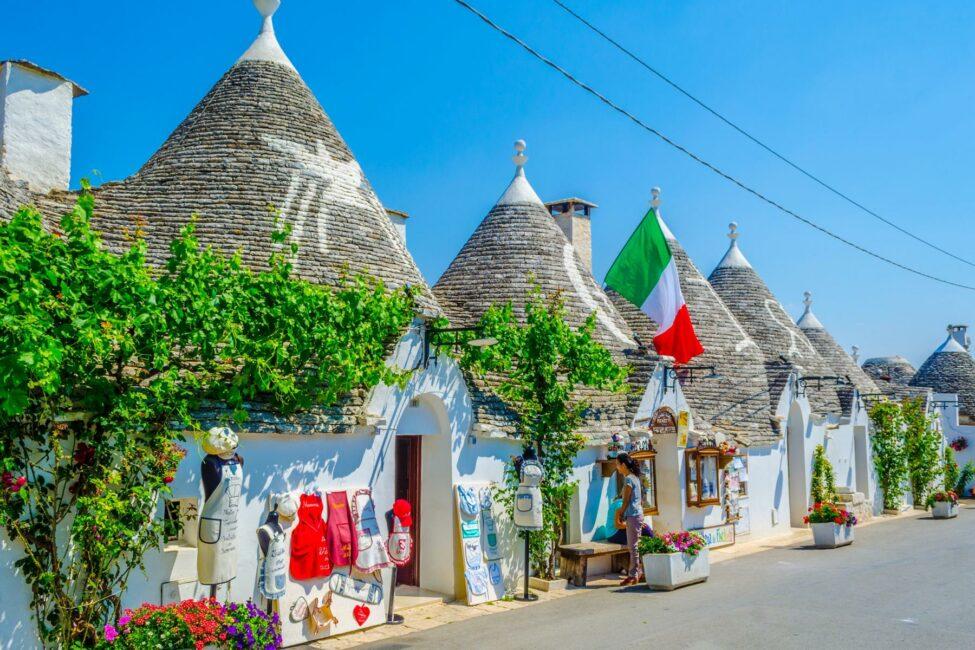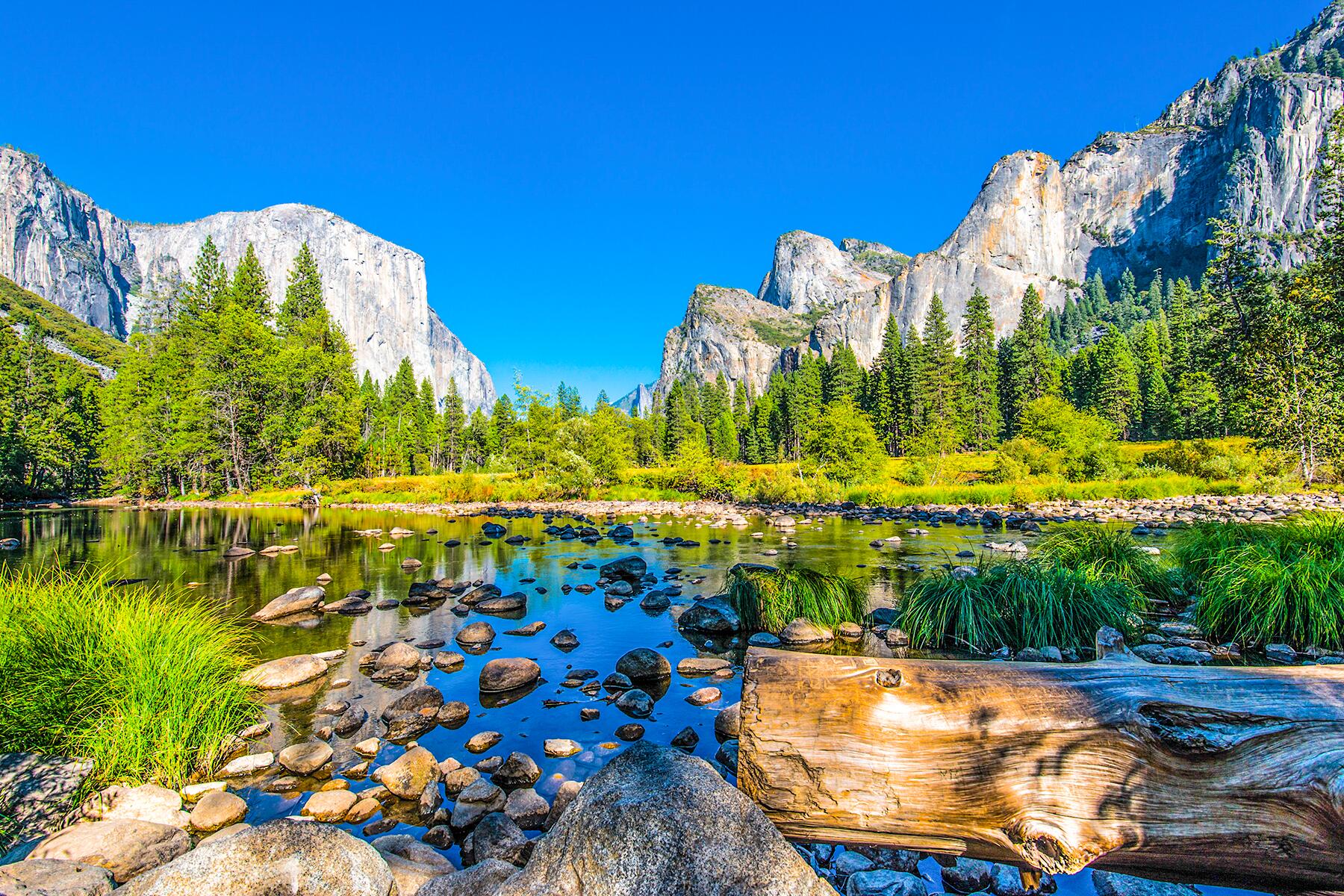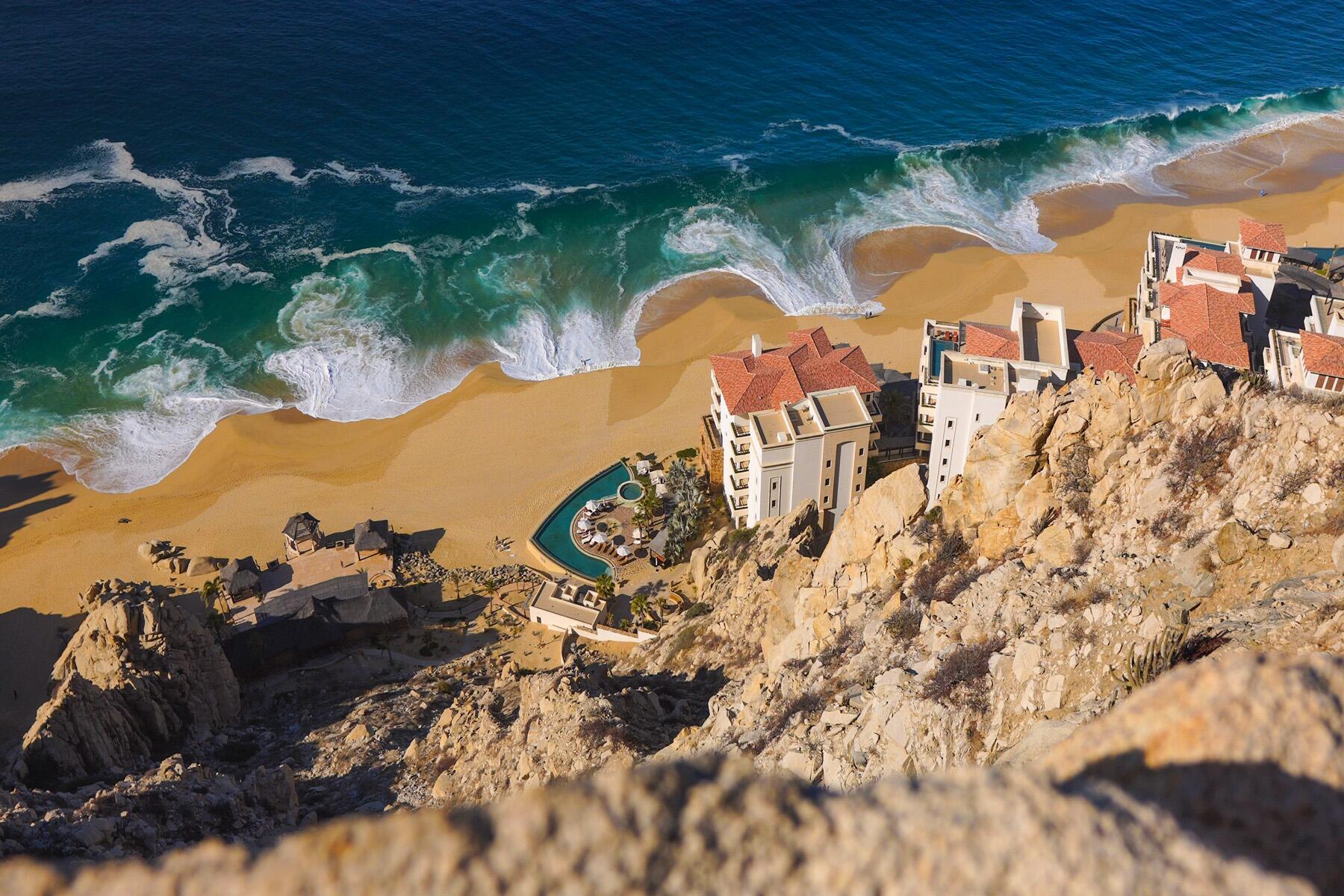Far from the shadows of the Colosseum and Italy’s other famous sites lies a land of gently rolling hills, fields of olive trees, and round white houses that look like something out of a fairy tale.
Dotting the countryside, their conical limestone roofs pop up amid the tall grass and trees, often sitting just behind low stone walls. The name for these curious little homes is “trullo” (the plural is trulli) and they’ve been a feature of Puglia’s Valle d’Itria on the heel of Italy’s boot for centuries.
Legend has it that during the Medieval period when this area was ruled by feudal overlords, the peasants built these homes because they were easy to dismantle. When the tax collectors came, they would pull a cord in the roof and the trullo would fall to rubble. When the tax collectors left, they would rebuild the homes in a few hours’ time. The original trulli, which date back to the 11th century and were used as storage or refuges, were made using dry-stone techniques without using mortar or cement, but their construction method has been lost to time. They can be repaired using cement, but no new trulli can be built.
On a recent trip to Puglia with my family, I had a chance to stay at Trullo Melograno, which is available to rent through The Thinking Traveller, a luxury villa rental company with properties in Puglia, Sicily, Corsica, and the Greek islands. Nestled deep in the countryside, it was really several trulli combined to form one villa with white plaster walls, stone floors, and charmingly rustic furniture. Outside there were cherry trees and fig trees, a pool, and a dining table under a pergola where we ate breakfast in the mornings and savored a dinner of local specialties like orecchiette and simply grilled fish prepared by the caretaker’s wife and son.
Recommended Fodor’s Video

The Thinking Traveller has several trulli in their portfolio, but whether you stay in one or not—though I highly recommend you do—you can take a tour of Alberobello, the town with the highest concentration of trulli in Puglia, as part of their Think Experiences program. According to our guide Caterina De Carlo, who was born and raised in Alberobello, there were about 1,500 people still living in trulli as of last year, but she believes that number has probably decreased as more and more of them are turned into B&Bs. From Piazza del Popolo, where we met her, we walked over to a viewpoint where we could see hundreds of white trulli with their pointy roofs lining the streets below. Some of them had religious or mythological symbols painted onto their roofs.
Caterina’s grandparents lived in trulli, but when her parents got married they bought a regular house. “In the ’80s, a trullo wasn’t well-regarded, it wasn’t like buying a trullo now,” she said. “Today whoever buys a trullo is making an investment, while at that time it wasn’t.”
Though staying in a trullo is in vogue now, they weren’t always so comfortable. Until the 1950s, the trulli didn’t have electricity or running water. Now if you go to Alberobello, you’ll find that they’ve been converted into small B&Bs, shops selling souvenirs or local products, restaurants, and cafés. In the past, people might have torn them down in order to build new structures, but since 1996 the trulli of Alberobello have been protected by UNESCO.

Caterina led us to the less touristy section of town, where we were able to peek inside one of the few trulli still inhabited by the same family that has owned it for decades. After we finished walking around town, we followed Caterina to a small farm constructed around a couple of trulli about a 10-minute drive away to see how the owners make fresh mozzarella and burrata. Much like the construction methods for building new homes, the cheesemaking process has also been modernized, but Gianni and his wife still make their cheeses by hand, without the help of any machines, the old-fashioned way. In a wooden bucket filled with a paste made of fresh milk and rennet, he showed us how he uses hot water to turn the paste into the gooey, malleable material he then forms into different shapes—fior di latte, braids, and the sacks that get filled with stracciatella to make heavenly burrata. When he was finished, we sat down for a tasting of the creamiest, purest cheese I’ve ever eaten.
This is why Puglia is worth visiting: besides the glittering beaches, the history, the land, the culture, and the food, traveling in Puglia gives you a chance to discover the trulli. They may not be grand like the Renaissance paintings in Florence and the Baroque fountains in Rome, but they tell the story of another way of life of Italy.




